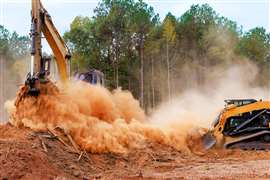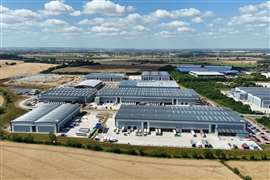Economic Outlook: North America
10 September 2013

The US economy has grown at less than +2% for the third consecutive quarter, and many of the factors that will shape the near term, such as the reduction of the Federal Reserve’s bond purchases or the impact of the federal government sequester, are not easy to predict. Even so, fundamentals for solid growth are in place for 2014 and 2015 - both consumer and business spending have increased in spite of these conditions and will continue to do so.
Arguably, the most important event in recent months was the 10-year Treasury bond yield rising from 2.0% in late May to about 2.9% at the time of this writing. Near-term growth in the housing sector has been affected by higher mortgage rates as a result. However, a lean supply of housing, positive builders’ sentiment, and continued rising prices should help the long-term recovery of the sector.
Perhaps the biggest near-term uncertainty for financial markets is when the Fed starts winding down its US$ 85 billion per month asset-purchasing program (QE3). While Fed officials are eager to end bond buying, labour market data is mixed and inflation is still running below the Fed’s +2% target.
A “tapering” is likely in December, but even so, the Fed will continue to purchase bonds for another couple of quarters and keep interest rates low at least until unemployment reaches 6.5%, probably in late 2015. As such, the impact on economic growth will probably be imperceptible.
The other policy uncertainty centres around federal government spending and the sequester. While the impact of the sequester was far less than what was anticipated at the beginning of this year, the third-quarter of 2013 is also the end of the federal government’s fiscal year, meaning that there are likely to be more cuts before September.
Assuming that the sequester lasts through the end of the calendar year, that implies a drag on growth from government spending in the second half of 2013.
Housing sector
The impact of Fed tapering is being felt in the housing sector, and the recent 100-basis-point (1 percentage point) jump in mortgage rates will slow the recovery. Higher rates have already caused a sharp drop in the demand for mortgage credit.
Housing starts which had been rebounding in the early part of this year, now hover just under a 900,000-unit annual rate. But the recovery in home sales and construction will ultimately continue since inventories are lean and demand for housing exceeds supply. Homebuilder sentiment remains high, and housing affordability is still historically favourable.
An analysis of the underlying demand for housing also suggests a resumption of this growth: new households forming (1.1 million units per year by IHS Global Insight’s estimate), replacement demand (250,000 units/year), and second-home demand (50,000 units/year).
Home prices will continue to rise faster than inflation until at least the end of 2014. While housing starts will number just under 1 million in 2013, the market will improve, supporting 1.2 million starts in 2014 and nearly 1.6 million units in 2015 and 2016.
Fixed investment has been another bright spot of late, with most gains coming from housing and equipment and intellectual property (a new category, largely software).
On the non-residential side, the construction market continues to suffer from excess inventory, weak demand and undisciplined fiscal policy. While the outlook is improved, employment and income growth are still lagging for this point in a recovery and it will still take some time for excess space to be absorbed.
Commercial construction
The outlook for commercial construction as a whole is positive, although it is expected to be muted over the next few quarters, as businesses remain cautious with long-term investment spending.
Spending growth has been more moderate in 2013 than in 2012 with expected growth of +6.9%. Commercial spending will get a boost in 2014 and 2015 as the residential sector continues to surge, falling back to a more normal pattern of growth afterwards.
Office construction growth has faltered as employment gains have been moderate, and focused on part-time workers as Obamacare costs discourage full-time employees. Growth in 2013 will be +8.7%, down from +12.8% in 2012. Even 2014 will see a slow start, with growth improving over the year. Even so, IHS Global Insight does not see a return to peak office construction spending until very late in the forecast.
Lodging construction will grow +15.7% in 2013, the best of all the commercial categories. Spending will still be about a third of the peak level in 2008 following a deep recession. There is a need to renovate existing facilities and rooms and even expansion in some markets. Spending will remain strong through 2014, as conditions continue to improve.
Retail had a decent 2012, but will struggle for even +1% gains in 2013. This sector continues to operate with excess capacity, and consumer confidence remains subdued. Housing, particularly home price increases, will be help this segment thanks to the boost it will give to consumer confidence. Given rising home prices, healthy growth in retail construction should be seen in 2014 and beyond.
Construction in the manufacturing sector contracted early this year after a very strong 2012. Given the slow pace of global recovery, 2013 will be subdued. However, the prospect of readily available domestic feedstocks from the development of North American shale and tight oil resources will lead to a resurgence of manufacturing construction activity by 2015, with a prolonged upturn as downstream manufacturing develops.
The weak link in the US construction forecast remains public spending. From health care to education to streets and highways, fiscal restraint is dictating postponement of investment.
Water infrastructure
The only segment with appreciable growth in 2013 has been water related infrastructure, a reflection of the housing recovery, and possibly expansion of water treatment activity in the shale gas fields.
Housing will lead to improved growth in street construction in 2014 and beyond, but the broad infrastructure sector will not see meaningful growth until 2015, and even then it will be in the low single digits.
The US construction market is gaining momentum, but the pace of growth mirrors that of the broad economic recovery – slower than past economic upturns. However, the preponderance of evidence suggests that the recovery is real and sustainable, with improving prospects each year through 2015 and likely into 2016.





